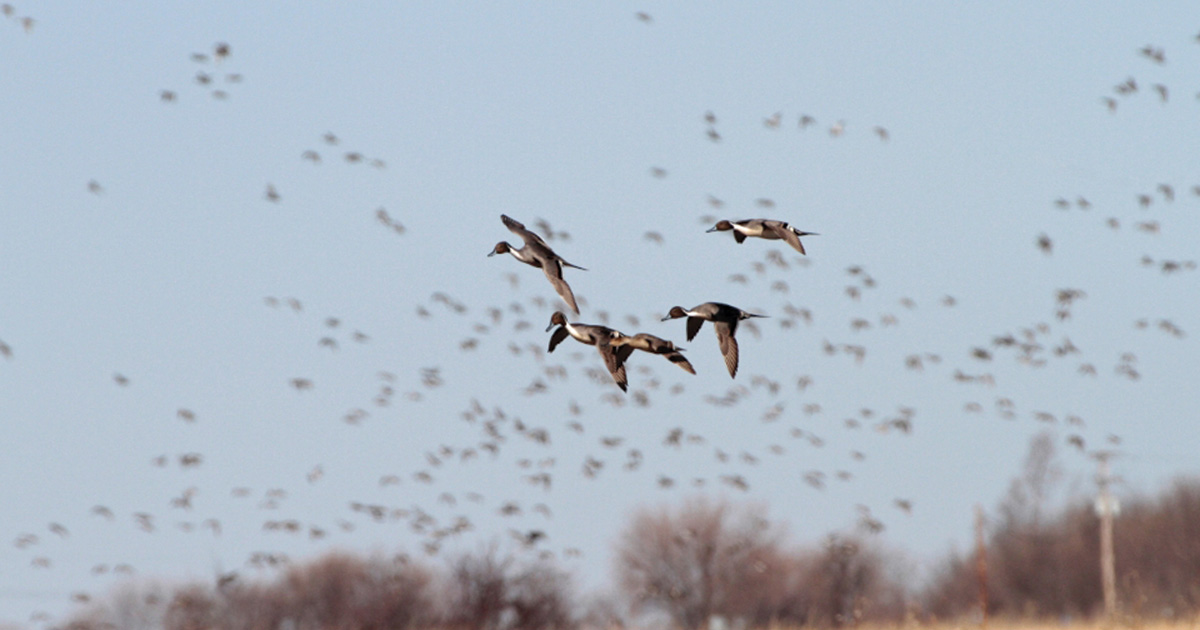Migration Alert: Texas Coastal Waterfowlers Kick Off Much-Anticipated Regular Duck Season
Migration Alert: Nov. 7, 2023 – Central Flyway – Texas Coast
Migration Alert: Nov. 7, 2023 – Central Flyway – Texas Coast

The first real cold front of the season coupled with a bright moon last week set the stage for one of the most anticipated Texas South Zone duck openers in years.
“We literally have thousands of ducks right now in the area marshes, impoundments and fields,” reports Calhoun County guide Jack Huddleston.
High tides for most of October have flooded coastal marshes and rejuvenated what had been dry, barren ponds. Though that water is hypersaline due to exceptional drought conditions in Texas, right now ducks don’t seem to mind. Huddleston hunts both high ground freshwater impoundments near Port O’Connor and Seadrift and coastal flats on the bay.
“The are more wigeon than I have seen since the early 2000s,” Huddleston says. “Lots of shovelers, teal, gadwalls and pintails are showing as well. A few geese have shown up too.”
Guide Alan Voight of Rockport reports that drought conditions and hypersaline water might make for a tough year if rainfall doesn’t sweeten the marsh. “If we can get significant rainfall before the end of the first split, we might salvage the second half,” Voight says.
Around Matagorda, an influx of ducks early last week made for more traffic on the bays for diving ducks and puddle ducks. Many are reporting good numbers of wigeon, gadwalls and teal, and the first redheads and scaup have showed as well.
Like the lower coast, tides have pushed saltwater into marsh ponds, and birds are using the backwaters. Freshwater is at a premium along the middle coast, and those able to hunt the sweet water should see above-average hunting if drought conditions persist.
“There are impressive numbers of ducks hitting East Matagorda Bay,” says guide Kevin Kosik. “They started showing up on the backside of the cold front.”
The Chambers and Jefferson County marshes east of Houston are holding good numbers of puddle ducks despite saltier-than-normal conditions. Still, the largest concentrations remain on the high ground on the freshwater impoundments near IH-10. This area received good rainfall during the past two weeks.
“We are seeing wigeon, gadwalls, pintails and teal on the prairie,” says guide Brian Davenport of Fin and Fowl Outfitters. “We still need more rain to top off our coastal marshes.”
Prospects are bright along the coastal prairie. The September teal season saw some of the most consistent action on the prairie in over a decade, and one month later, the ducks seem to be following the same pattern. Ponds from El Campo to Garwood to East Bernard to Lissie are full of ducks. Good numbers of specklebellies and a few snow geese are holding in second-cropped rice fields. The first split runs Nov. 4-26.
Stay up to date with the latest migration information.